Many of us look forward to the unmistakable taste of fresh, locally grown vegetables and fruit, especially those that come from our own soil. For those of you who would like to grow food at home but have limited space, don't despair. Your dream of home-grown food is still within reach.
You may be wondering how to grow vegetables if you have little to no space with full sun exposure, but many vegetables will tolerate partial shade, and a few could even be considered 'shade vegetables' as they won't tolerate full sun exposure.
Maybe you live in an apartment with not much more than a balcony, but you love fresh veggies and would still like to grow your own - no problem! Here are some top tips to help make your urban garden a tasty success. If you don't even have a balcony, you can even grow vegetables at home in an apartment if you can spare a small amount of window space - see here.
1.) Container gardening
If you have limited outdoor space, be it a small yard, shared courtyard or balcony, a container garden with vegetables and fruits may be the ideal thing for you.
One of the great things about container gardening is the ability to grow almost any vegetable and many varieties of fruit, given the right conditions and space enough for an appropriately-sized container.
With the right amount of sun exposure and watering system it's even feasible to successfully grow small fruit trees or bushes this way. In my day I have seen both lemon trees and blueberry bushes thrive in above-ground planters - what a tasty way to fill your container garden with color!
Container gardens are also extremely space efficient as every ounce of soil in your container will count for fruit and vegetable production - no growing space will be wasted underfoot as you care for and harvest your plants.
Container garden also has the added benefit of being a great back-saver, or they can be configured for those with reduced mobility, making certain that growing fresh fruit and vegetables at home is accessible to all.
Yet another unique thing about container gardening is your ability as the gardener to chase the sun if necessary, as containers can be moved throughout the day. If you have no time to be moving containers whilst life carries on around you, no problem, plant for the amount of sun you have.
For Seeds, Plants, Tools & Gardening products Online with delivery to the door, try here.

While it's true that many plants will demand a minimum of 6 hours of direct sun per day there are several 'shade vegetables' that will tolerate or thrive in partial shade and dappled sunlight.
A few things to consider when container gardening:
- 'Upcycling' can lead to some very interesting containers - steel pasta strainers are great for kitchen herbs, reclaimed vintage boxes will add flair to your vegetative stylings and even upcycled plastic totes can make great planters if you're more concerned with utility than style. You are limited only by your imagination and preferences. You'll want to remember to allow for drainage, so if necessary drill holes or otherwise puncture the bottom of your chosen containers. We also found a great lightweight yet robust fabric raised planter that we could get delivered to home here - and we're on our second season. It makes growing vegetables easier for young and old alike!
- Almost any plant will grow in a container if the container is big enough.
- Straw bales themselves can be used as containers for gardening, even if they can be a little messy and break down relatively quickly they are one viable option. We've been enjoying pumpkins and zucchini straight off the top of straw bales this season - and it couldn't be easier (See how this is done here.)
- Be sure to provide enough water and food when gardening in containers, as soil in containers will dry out faster and nutrients tend to flush through them with greater speed than their in-ground counterparts.
- Assess your sun exposure and plant accordingly.
For more container gardening resources check out the forum at homegrown.org
2.) Vertical Gardening:
Ah, vertical gardening. There are so many ways to grow upwards - let's face it, most vegetables and fruit bearing plants grow upwards - when fitting food production into a smaller space, consider using a traditional trellis to a recycled pallet planter to a hanging hydroponic window garden. The options for vertical gardening are vast and require only some creativity - making productive space out of lost space is the key to maximum productivity in the small urban garden.

Which edibles lend themselves to vertical gardening you may be wondering; well I'm happy to report that the list is long. Here are just a few to get you started:
- Tomatoes: Cherry tomatoes in particular (but most varieties will do) are very happy to grow in an upward fashion when given the right amount of support. Old nylons cut into strips are fabulous for tying your plants to their upward structures as they are flexible and will result in the least amount of stress on the plant where they are attached. Maybe you don't wear nylons or your nylons are far too valuable to use in your urban garden, no worries, pick some up at the thrift store, they'll cost next to nothing. Alternatively, plant at the top of a wall down to a basement, and watch the branches fill up with sweet cherry tomatoes as the summer progresses.
- Winter squash and melons: These plants vine naturally and will happily grow towards the sky. Again, they will need adequate support, particularly as they begin to fruit, but they react well to being trained to where you have the room.
- Peas and pole beans will happily grow up anything strong enough to support them
- Cucumbers this favorite of the afternoon tea, spa, or spritzer ingredient on the warmer days of summer is relatively simple to grow in the smallest of spaces.
- Asian greens, salad greens, strawberries and kitchen herbs will all happily grow in nothing more than a recycled pallet on its side. Instructions for that can be found here.
- Greens, strawberries or kitchen herbs will also happily grow in sections of rain gutter which can either hang or be fixed to the side of almost any southward facing structure or in a network of hanging bottles in a south facing window as seen here. Hanging rain gutter garden instructions are here.
- Potatoes. Yup, even potatoes will grow vertically if provided with the right container to do so. Imagine you're using a clean garbage can with all kinds of holes drilled in the bottom. Throw down a few inches of soil and compost, add your cut and cured pieces of seed potatoes and cover them with 6 more inches of dirt. Water. When the aerial parts of the plant have reached about 6 - 8 inches, add more soil leaving only a few inches of green exposed. This cycle can be repeated several times throughout the season. When the plants turns brown and dies, it's time to harvest. The potatoes on the very top will be smaller and more delicate than those on the bottom, much like the gourmet "new" potatoes available at the store for an elevated price. I have heard tell of vertical potatoes growing in a straw-filled container (rather than soil) allowing for easier harvest and I plan to try it this year. Stop Press: This totally worked for us, and it seems like the potatoes grow easier leading to a heavier crop. I kept topping up the straw with the slowly disintegrating straw bales our pumpkin and zuccinis are growing in.
- Try hanging planters: Strawberries will thrive in hanging baskets, even tomatoes will happily grow upside down out of the bottom of a hanging bucket. Our ground covering strawberries do little more than make for fat, happy chipmunks, hanging them means you might get to eat some too. DIY upside down tomato planter instructions here.
Worthy of note: We have had great success using sunflowers as the support structure for beans, peas and cucumbers while planting shade tolerant salad greens in the shadow of the vertical consortium.
For Seeds, Plants, Tools & Gardening products Online with delivery to the door, try here.
3.) Raised beds and square foot gardening:
If your gardening space is big enough for raised beds, they can be a great way to maximize space and effort. Not only can raised beds accommodate more plants per square foot, but gardening in a raised bed greatly reduces the need to weed. It also makes weeds much easier to uproot throughout the season, which can be a real blessing for your back and if the beds are carefully spaced, even gardening from a wheelchair becomes an enjoyable possibility in small spaces. Garden upkeep was never easier.

Here are just a few of the advantages of growing food in a raised bed in a small garden:
- An extended growing season. A raised bed will warm up faster than the ground in the spring and in the fall your bed can easily be tented to extend your growing season by a few weeks or so - this helps with yield in a smaller garden.
- Location, location, location: Grow food in the location of your choice regardless of soil conditions as you will be adding your own.
- Raised beds offer excellent drainage in all soil conditions, regardless of where your garden is located.
- Soil compaction in no longer an issue, so working and maintaining the soil and weeding will be much easier for smaller spaces.
- Every square inch of soil in your small space will go towards food production as none will be wasted underfoot.
- Depending on how high you choose to build the raised beds in your small-space garden, you could completely eliminate the need to bend over. At worst, even if your raised beds are only a foot and a half high, you won't be bending as far.
A raised bed is ideally 18 - 24 inches deep, but if you are building your raised beds on top of existing earth you wilI have some leeway here. I have successfully gardened in boxes built over earth with only one foot of soil depth. You can find both detailed instructions for building a raised beds and multiple choices online, or
For Seeds, Plants, Tools & Gardening products Online with delivery to the door, try here.
and for raised bed kits including special offers and home delivery - see here
4.) Keyhole gardens
Keyhole gardens are designed to maximize space by eliminating the need for walkways as found in traditional row gardening or with raised beds. The design is also intended to be draught-resistant and deliver nutrients via compost throughout the entire growing season.
Keyhole gardens are a raised style bed that take the rough shape of a circle with a "keyhole" shaped path allowing access to the entire garden. In the center of the circle is a vertical tunnel that houses many layers of compost. As the compost breaks down it delivers nutrients and moisture directly to the bed. Certainly an efficient way to grow, keyhole gardens can be constructed with many different materials as a quick Google search of the term will confirm. If you have space for a circle roughly 8 - 10 feet in diameter you can use whatever appropriate materials that are easily accessible corrugated siding, cedar posts, landscaping rock, bricks or any combination thereof. We have a page dedicated to keyhole gardens for more details.
 |
|
|
5.) The edible landscape, forest gardens and permascaping
The art of edible permascaping involves planting food bearing perennials in areas where ornamentals would traditionally take up space. In fact, many popular ornamentals are edible, so turning your landscape into a food-bearing paradise is easier than it might sounds.
When looking at your entire property as possible ground on which to grow food, your potential to increase your yield goes up accordingly. Lawns, for instance, can easily be transformed into garden plots, flowering perenial gardens can often accomodate plants that are both beautiful and edible, even forested areas on your property can produce food (and in some cases might already have something wild worth harvesting).

6.) Community gardens
No south-facing window, balcony or yard? Consider a community garden, it's a great way to grow food while strengthening relationships with neighbours. If there isn't already a community garden in your neighbourhood, might there be a vacant lot on which to start one?
One thing is for sure, learning how to grow vegetables with others in your community while sharing information and resources will do more than put food on the table. Collective gardening or even just sharing gardening space will help to build and strengthen relationships within your community.
A community garden is also a great way to give kids exposure to food production that they might not otherwise get. We will face many challenges in the future around the issues of natural resources and food production, so the ability to grow food in one capacity or another is a skill that may be quite valuable for future generations.
7.) Try lasagna gardening (it's a method, not what's grown)
The easiest way to turn a backyard lawn into an organic food-producing garden is by building a lasagna garden, as there is no digging required.
The first thing we will clear up for any rookie gardeners; we aren’t planting noodle trees where we will be harvesting penne and rigatoni. Not even tomatoes, aubergines, zuccinis and bell-peppers, although they'd go great in home-made lasagne and we could! A lasagna garden is actually a technique often referred to as ‘sheet composting’ or the 'sheet mulch method', and is a great way to keep kitchen food waste from ending up in a landfill and easily get a quick start to growing your own food at home. It's also one of the fabulous ways to convert an area of high-maintenance lawn into an eco-friendly, productive and possibly organic garden - without having to go out and buy soil, especially if the underlying conditions are a heavy clay soil, lasagne gardening produces a light tilth, full of nutrients, and ready to grow delicious vegetables in the shade or in full sun. It's both simple and satisfying!
The name lasagna garden simply refers to the method of layering soil, mulch and root barriers on top of grass in a way that uses the nutrients from existing lawns, with care taken to make sure the grass and weeds don’t grow through. Until they do. Because they will. That’s just the life of gardening; embrace it and enjoy it. To see step by step instructions for creating a lasagna garden, see here - or to explore lasagna gardening pros and cons, see here.
8.) Be strategic
After deciding to grow your own vegetables, choosing the right plants for your space may be the most important decision you'll make. Many plants will require a minimum of 6 hours of direct sun per day and others vegetables will prefer partial shade during the hottest days of the summer. Assess your space, choose wisely and good luck! As always, if you have any tips or experience to share, we sure hope you'll share your knowledge in the comments below.
For Seeds, Plants, Tools & Gardening products Online with delivery to the door, try here.
Also read about building a greenhouse in a cold climate here, from the EcoHome Green building guides

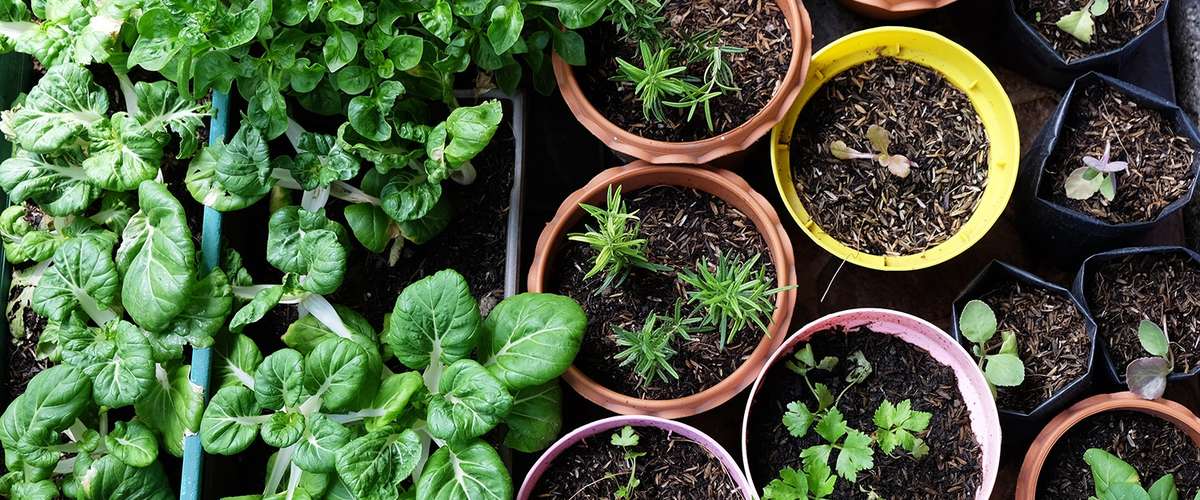















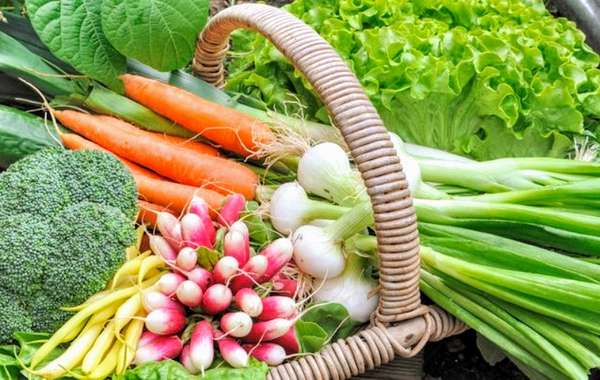
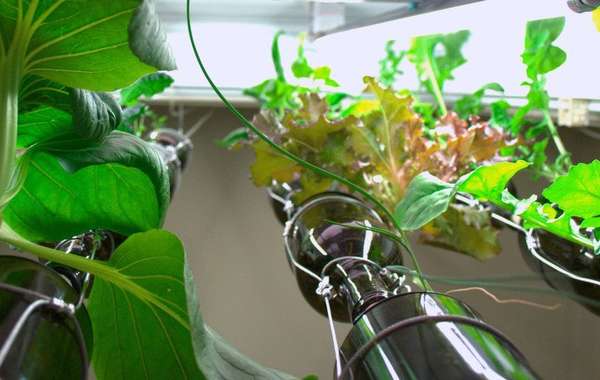
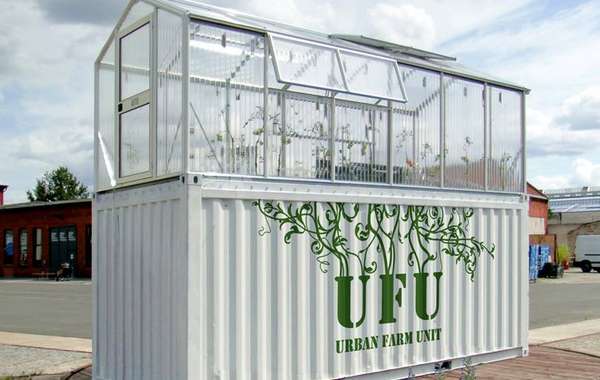
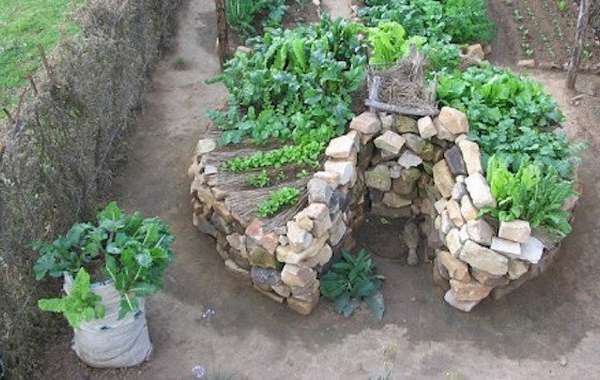

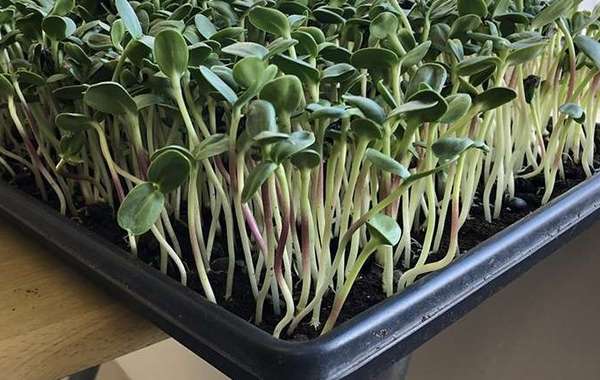
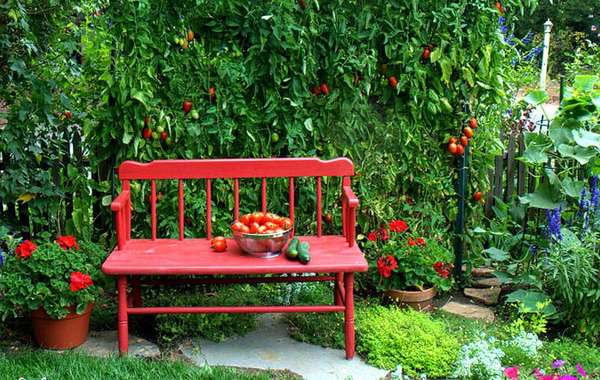
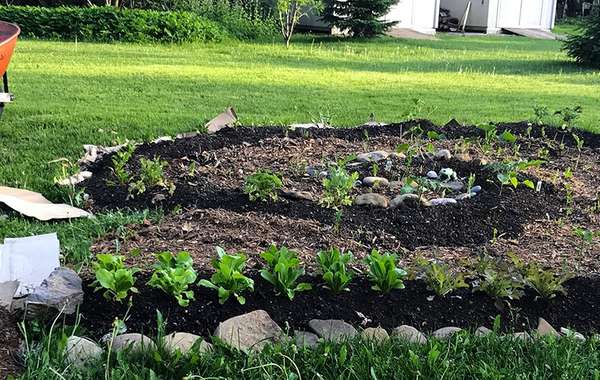
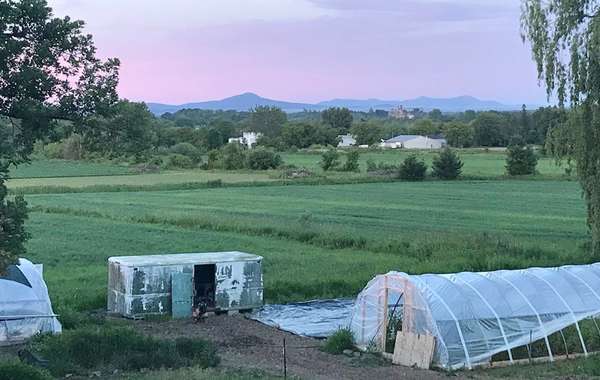
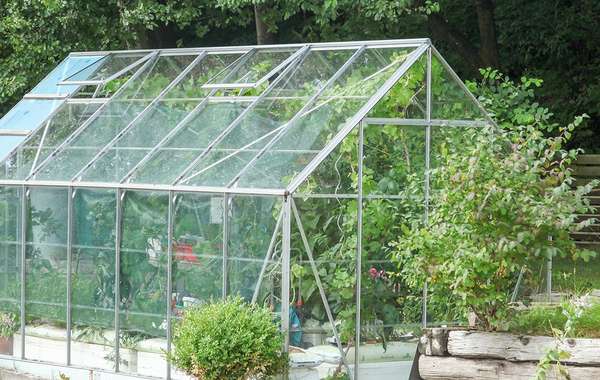
Hey, thanks for including so many resources!
you're a really great resource...THANKS !!
What do you think about green beans growing in a gutter garden....my thoughts are that they may do ok, gets them off the ground - similiar to how some people grow strawberrys. But I am not sure if the depth of the gutter will be sufficient for the root growth. Thanks
John
Thank you for sharing the tips. It helps a lot to me and now I already had an idea of what to do.
Thank you for sharing I was wondering where I could get this. Am very much interested
I grew up in the suburbs, and was taught gardening from the start, and always liked it. It makes for a great meditative hobby, and is quite satisfying. However, I moved out at the start of summer, in a small apartment with a little balcony facing north... I took two containers with me, knowing they might not survive the summer. I am very happy to announce that my "mojito mint" is still giving me lots of very tasty leaves, and my cucumber has already given me one delicious treat, and is currently working on 4 more. My bell pepper plant (same container as the cucumbers) is still alive, and I will be harvesting my first snackbell probably tomorrow, with 2 more to be ready in the coming weeks.
Thank you for sharing such insightful resources..Love reading from you always.